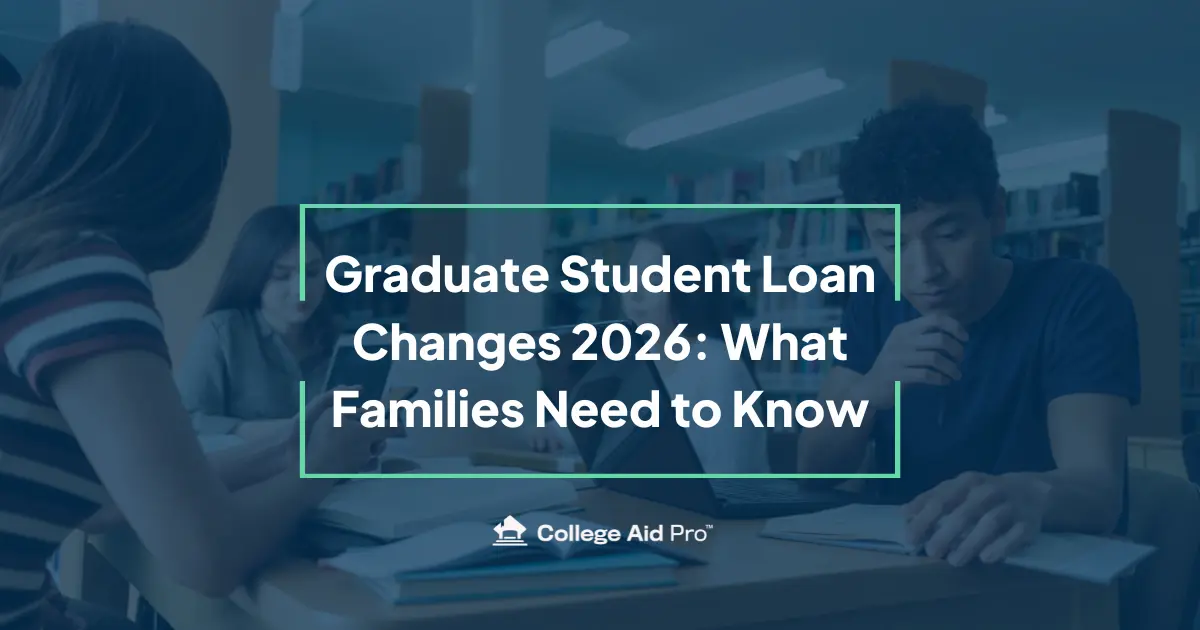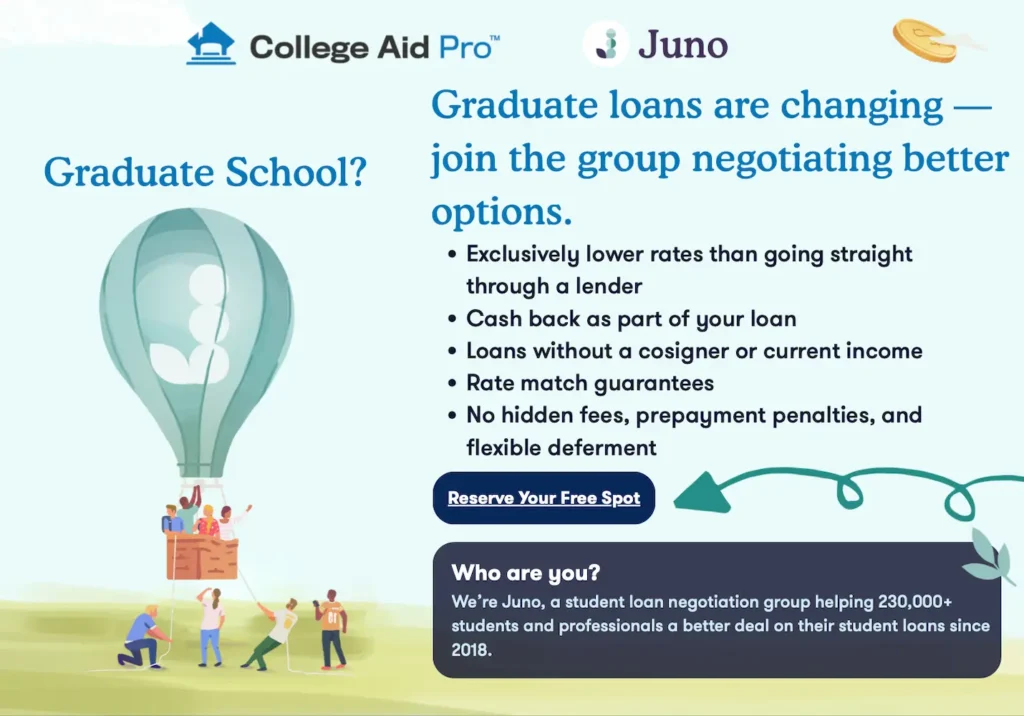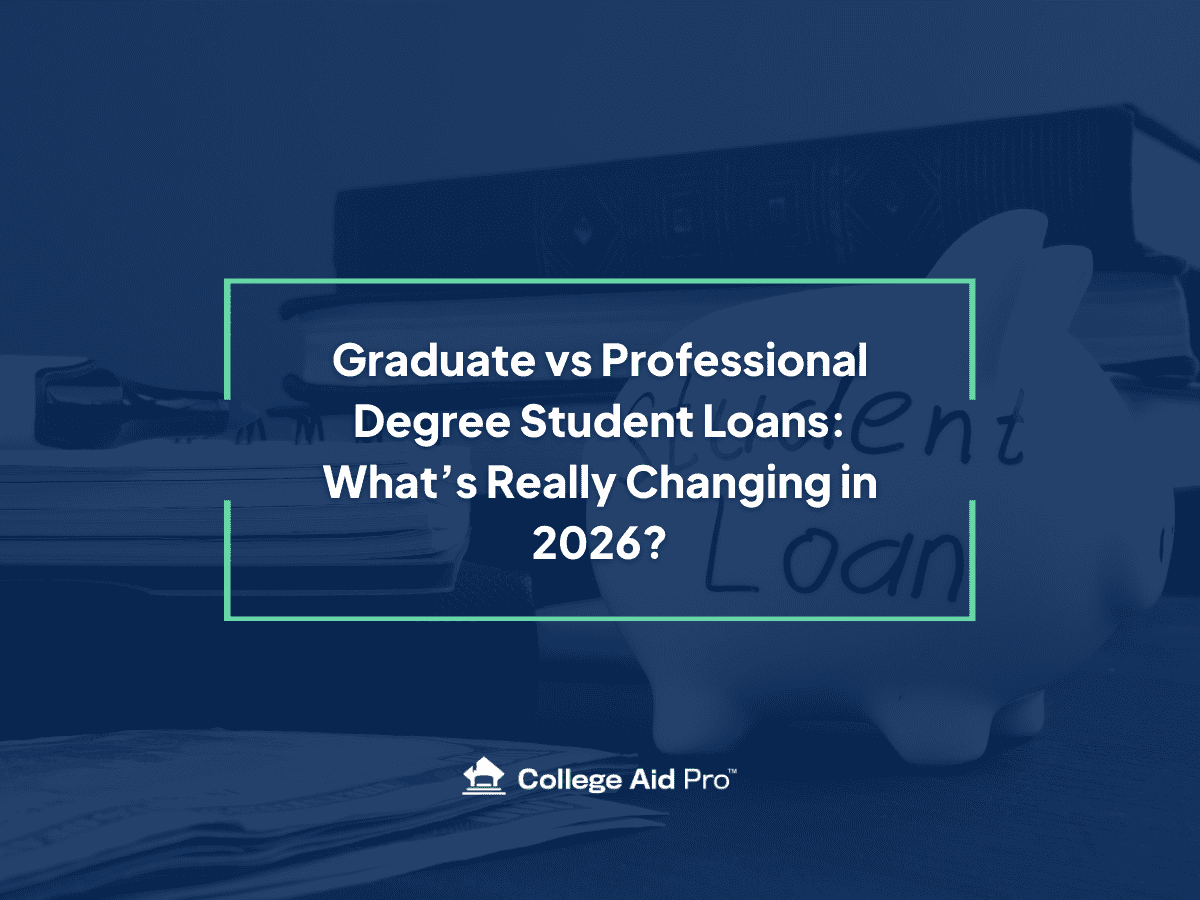Graduate Student Loan Changes 2026: What Families Need to Know
Congress passed the One Big Beautiful Bill Act (OBBB) in July 2025. For graduate and professional students, the big news is timing: nothing changes for the 2025–26 aid year, but major borrowing updates begin July 1, 2026. The notes below focus only on graduate borrowing and are written for families who want straight talk without jargon.
College Aid Pro is monitoring official updates and will refresh this guidance as schools and the Department of Education finalize details.
Quick notes to keep in mind:
- No OBBB-driven changes to graduate borrowing for 2025–26.
- Students who begin grad school before July 1, 2026 may still be packaged under current rules for that aid year (including Grad PLUS).
- Your school’s financial aid office is the final source on packaging for your specific program and cohort.
Graduate Student Loan Changes 2026 Friendly Disclaimer: Always confirm with your institution and federal resources.

Graduate Student Loan Changes 2026: What We Know (Graduate & Professional Focus)
Grad PLUS: Sunsetting for New Borrowers
- What is (was) Grad PLUS?
- Grad PLUS is a federal loan for graduate and professional students that has traditionally acted as the “top-off” after Unsubsidized Federal Direct Loans. It could cover up to the full cost of attendance (tuition, fees, and reasonable living expenses) minus other aid. It requires a basic credit check, typically carries a higher interest rate and origination fee than Unsubsidized loans, and—crucially—hasn’t had a hard aggregate limit, which is why many students used it to bridge the final gap.
- Grad PLUS stops for new borrowing on July 1, 2026. After that date, new Grad PLUS loans won’t be available to new borrowers.
- Students already using Grad PLUS may see limited, program-completion eligibility during a transition window, depending on how schools implement the change.
New Federal Caps: The Core Shift
Starting July 1, 2026, graduate borrowing shifts from “cover the full bill with federal loans” to a hard-cap system.
- Professional programs (medicine, dentistry, law, etc.):
You can borrow up to $50,000 per year in Federal Direct Unsubsidized Loans, with a $200,000 lifetime ceiling. - All other graduate programs (master’s and non-professional doctorates):
You can borrow up to $20,500 per year, with a $100,000 lifetime ceiling. - Overall lifetime tracking:
Many schools will also reference an overall lifetime total around $257,500 across federal loans. How your previous undergraduate and graduate borrowing is counted toward that figure is determined by your school and the federal rules they follow.
| Program | Before OBBB (through 2025–26) | After OBBB (effective July 1, 2026) |
| Grad PLUS Loans | Available up to full Cost of Attendance (COA); no aggregate cap beyond COA (credit check required). | Eliminated for new borrowers/program starts; limited transition for existing Grad PLUS borrowers to finish current program (details via ED/schools). |
| Direct Unsubsidized (Non-Professional Grad) | $20,500 annual / $138,500 aggregate (includes undergrad borrowing). | $20,500 annual / $100,000 aggregate (grad-only cap; undergrad excluded from this subtotal). |
| Direct Unsubsidized (Professional Degrees) | Annual limits vary; up to $224,000 aggregate applies to certain health-professions programs (e.g., MD/DDS/DVM). | $50,000 annual / $200,000 aggregate (grad-only cap for “professional” programs; final definitions pending ED). |
| Overall Lifetime Limit (all federal student loans) | No unified lifetime cap across all federal loans (Grad PLUS effectively uncapped to COA). | $257,500 total lifetime cap across federal student loans (undergrad + grad/professional totals combined; excludes Parent PLUS borrowed by parents). |
Graduate Student Loan Changes 2026: What This Means (After Grad PLUS Ends)
- No more federal “top-off.” Once you hit the Federal Direct Unsubsidized cap, there isn’t another federal loan to cover the remainder of your cost of attendance.
- Private loans may be needed to fill a true gap. If there’s still a shortfall after federal Unsubsidized, scholarships/assistantships, and other resources, families/students will likely consider private lenders to cover the difference.
Graduate Student Loan Changes 2026: Part-Time Enrollment – Proration Kicks In
From July 1, 2026 forward, enrollment intensity matters. If you’re less than full-time, your annual eligibility is prorated. Helpful for work–life balance? Yes. But the tradeoff is smaller federal loan amounts each year, while living costs may continue over more months.
Graduate Student Loan Changes 2026: What’s Still Being Clarified
Who Counts as “Professional” vs. “Graduate”
The higher caps are tied to “professional programs.” Final definitions, edge cases, and dual-degree scenarios will be spelled out by federal guidance and school policy.
Transition Treatment for Current Borrowers
If you’re already in a program and using Grad PLUS before July 1, 2026, schools will outline how long and under what conditions you can continue that borrowing and how it interacts with the new unsubsidized caps.
Proration Mechanics
Schools will publish the nuts and bolts: how proration is calculated (credits, terms, clock hours) and how it applies to nonstandard calendars, clinicals, or residencies.
Mixed-Era Borrowers
If you combine pre-2026 loans with new post-2026 loans, expect guidance on how servicers will display, bill, and manage the two “eras” side by side.

Graduate Student Loan Changes 2026: How College Aid Pro × Juno Helps with Graduate Borrowing (and Repayment)
Graduate borrowing is tightening—annual and lifetime federal caps are coming, Grad PLUS is ending for new borrowing, and repayment choices are being simplified. Our partnership with Juno gives families a clear path to plan, compare, and (when needed) borrow more strategically.
Why this matters now
- Federal dollars are finite. With caps in place and Grad PLUS winding down, early planning prevents last-minute scrambling.
- Repayment is shifting. Changes to income-driven options mean borrowers entering repayment around 2026 need a clear strategy to preserve federal benefits when they’re valuable—or consider market-based refinancing when it truly makes sense.
- Timing is strategic. With provisions phasing in by July 1, 2026, early modeling helps you keep the federal advantages you need and identify the smallest, lowest-cost way to close any remaining gap.
What Juno’s marketplace can include (subject to lender terms)
- Group-negotiated rates that aim to beat going direct to a single lender.
- Potential cash-back incentives on funded loans.
- Options that may not require a cosigner or current income (program- and lender-dependent).
- Rate-match guarantees from select lenders.
- Transparent terms: no hidden fees, no prepayment penalties, and flexible deferment options where offered.
Click here to join free today!
We’ll keep watching the rollout and translate new details into plain English as schools and agencies finalize the playbook.




